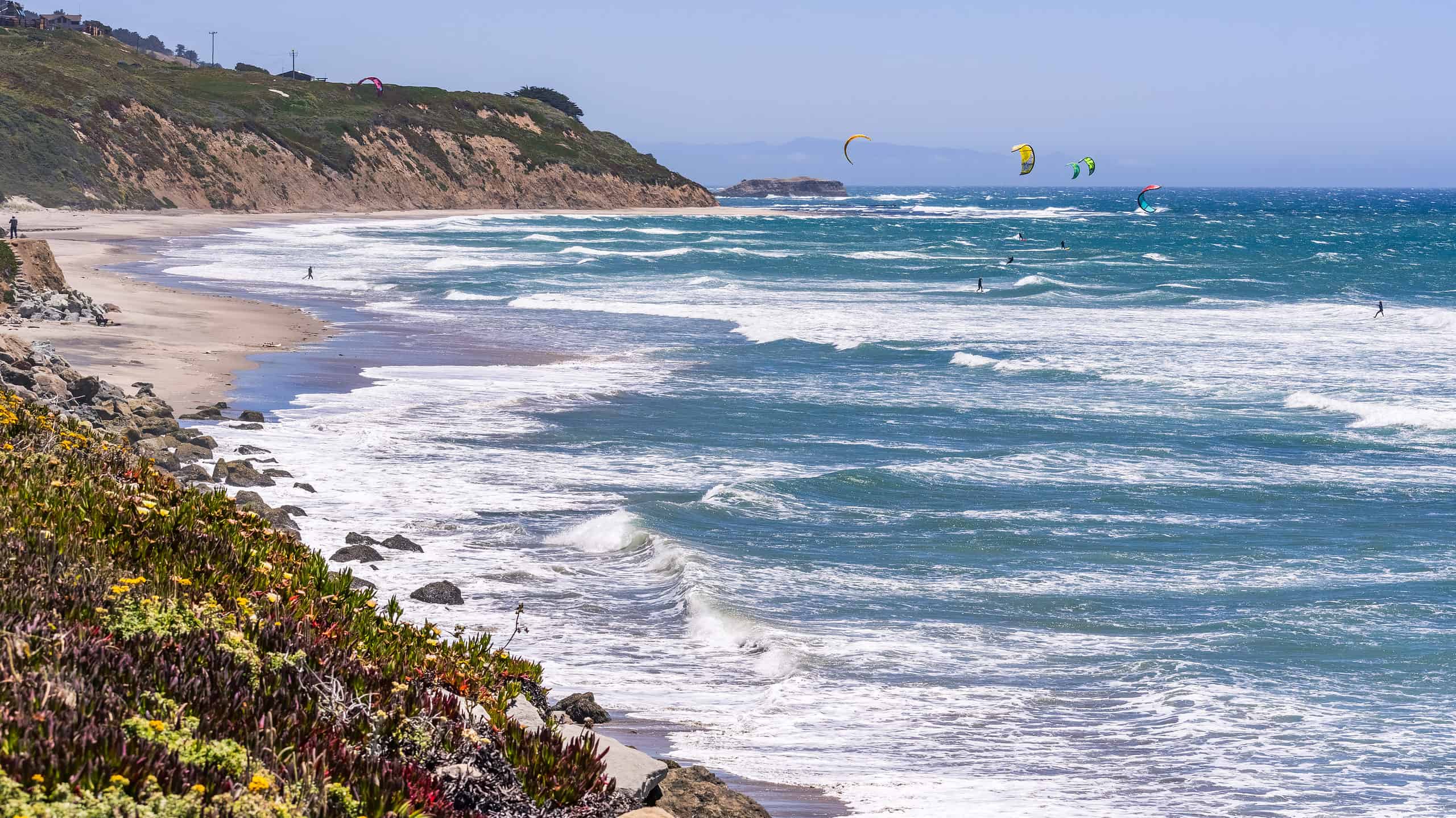You’ve set up your towel, beach umbrella, and you have a cooler with your favorite refreshments nearby. The waves are lapping on the shore and as you look around, you spot several different types of birds. What are they? Discover six birds you’ll see along California’s coastline and beaches!
6 Birds You’ll See Along California’s Coastline and Beaches
1. California Gull
Scientific name: Larus californicus
The California gull doesn’t just graze California’s coastline and beaches, they are also found inland as well. They are medium-sized and during breeding, you can find them in colonies. They enjoy lakes, rivers, and islands but you may also spot them in different inland locations like pastures or even landfills. These are foraging birds, and they travel far to find food.
They are opportunistic eaters but generally prefer aquatic invertebrates. You’re most likely to spot them during the wintertime, which is when they head over to the coast. In the summer season, California gulls typically prefer hanging around rivers and lakes. But since there’s plenty to explore in terms of food in human-populated environments, you may often spot them in parking lots as well.
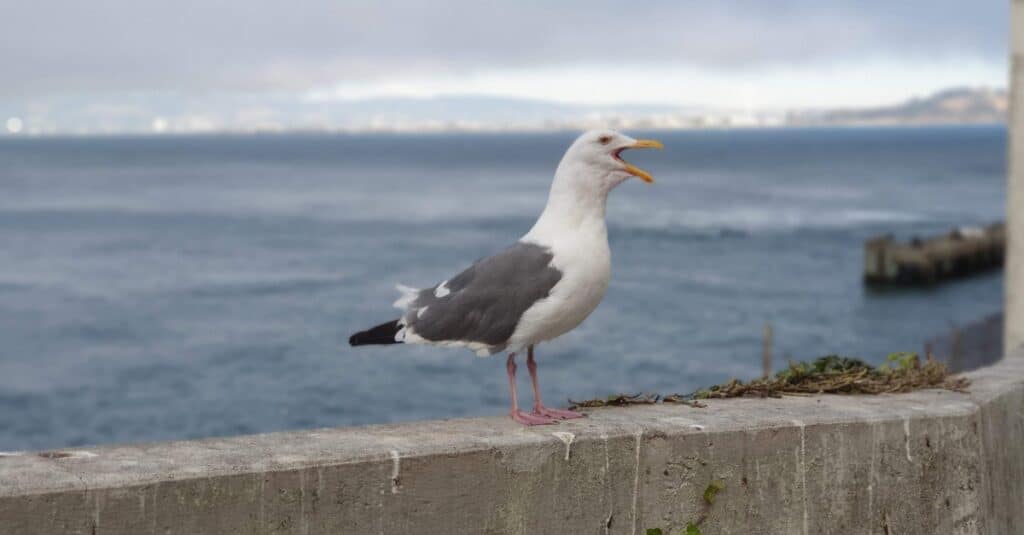
California gulls are found along the coast where they can snag some snacks!
©iStock.com/autina
2. California Quail
Scientific name: Callipepla californica
You can distinguish the California quail based on its rounded, ball-shaped body. These birds have beautiful gray breasts, and their undersides have an intricate light-colored pattern. Whereas some birds have a head plume that slicks back, the California quail has a unique appearance because that head plume falls forward in a bowing display.
This is a ground-foraging bird that nests in the ground. You might spot the California quail when it’s foraging, scratching at something in the ground. They’re skittish so if you’re trying to get a better look at one, make sure to move forward carefully so as not to startle them.
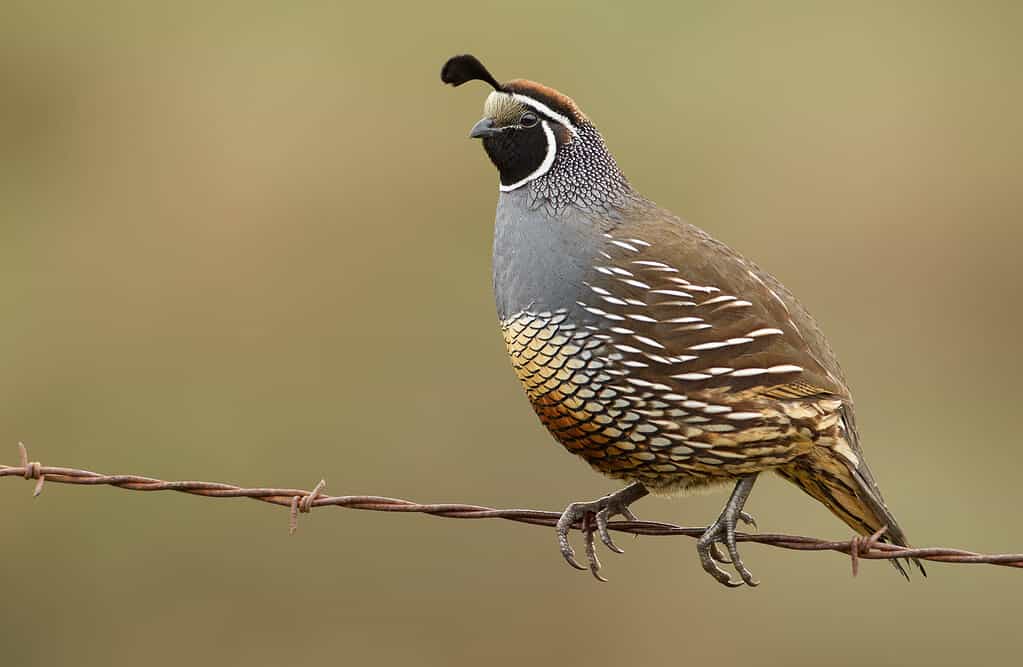
The California quail has a smart front-facing head plume!
©Agnieszka Bacal/Shutterstock.com
3. Semipalmated Plover
Scientific name: Charadrius semipalmatus
You might hear the semipalmated clover before you see it. They have a whistle that can be described as joyous and celebratory. These are small, short birds that look kind of similar to killdeer except they boast a single black band that looks like a thick necklace around their necks.
They’re ground forgers that nest in the ground and snack on aquatic invertebrates. They have kind of an erratic stop-and-go style when foraging, which can help you distinguish them from other types of shore birds you’ll see along California’s coastline and beaches. They avoid rocky environments so you’re much more likely to spot them around sandbars and mud flats.

Semipalmated plovers watch the water curiously to find aquatic invertebrates.
©Dee Carpenter Originals/Shutterstock.com
4. Killdeer
Scientific name: Charadrius vociferus
Killdeer are shore birds that don’t just graze the beach. Sometimes, you may spot one in a golf course or even a parking lot. These are ground-foraging birds that snack on insects. They prefer grasslands and you can hear them even at night when they call out while flying. The call they make is not cheerful like the semipalmated plovers’ call; rather, it’s more of a shrill sound. They’re noisy and that has earned them the nickname ‘the noisy plover.’
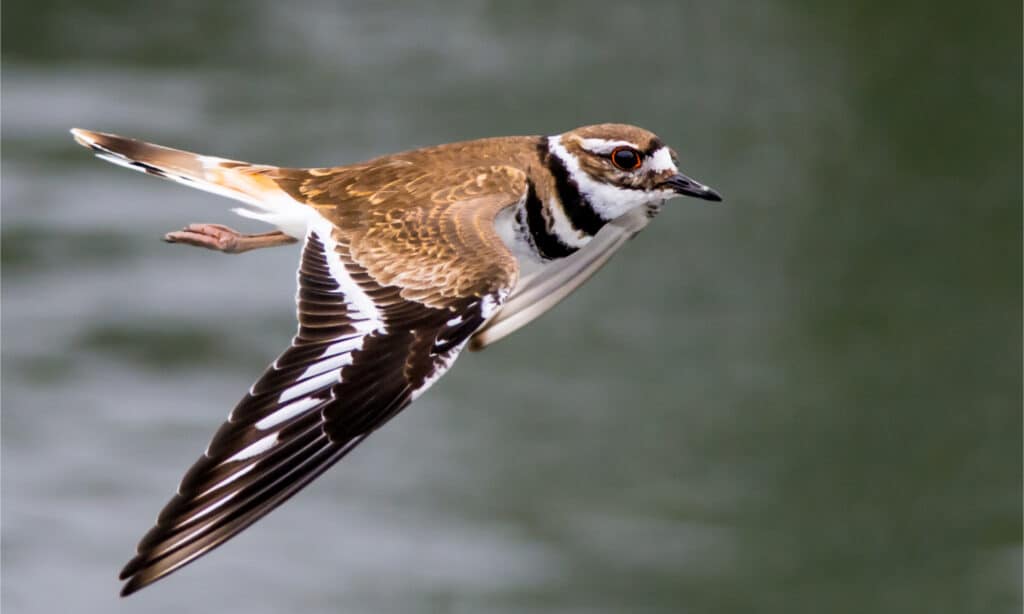
Killdeer are loud, especially when in flight.
©JoshCW Photo/Shutterstock.com
5. Wilson’s Phalarope
Scientific name: Phalaropus tricolor
Wilson’s phalarope is a dabbler that nests in the ground and eats aquatic invertebrates. These shorebirds prefer coastline environments as well as lakes and ponds. The late part of summer is when they migrate, giving you a chance to see their huge flocks as they move together. They spin around in the water and create whirlpools so that they can snack on the invertebrates that they stir up. The females have a grayish and peachy coloration and are certainly easier to spot than the males.
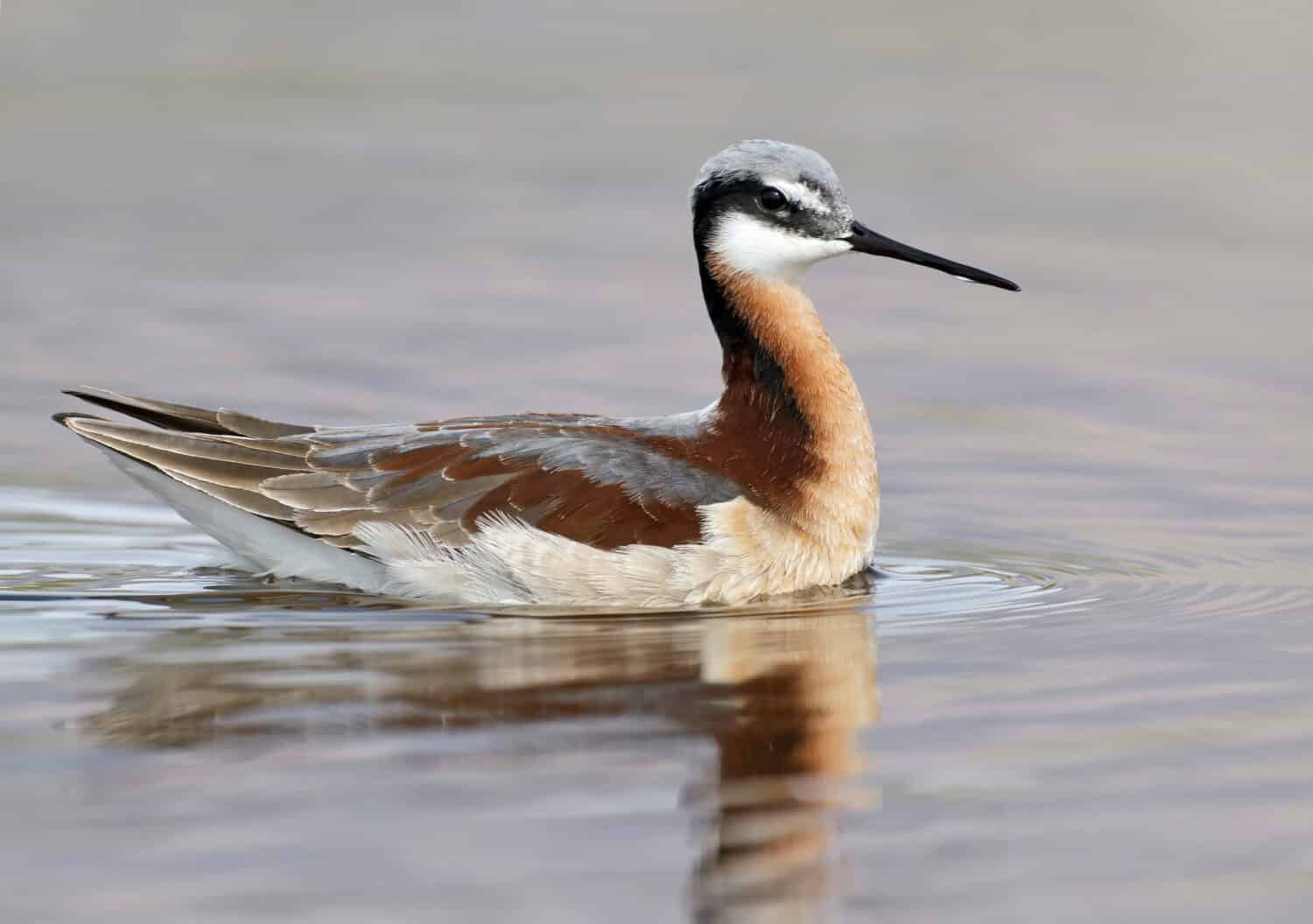
Wilson’s phalarope females are more colorful than the males.
©Agami Photo Agency/Shutterstock.com
6. Black-necked Stilt
Scientific name: Himantopus mexicanus
The black-necked stilt is a probing bird that enjoys marshes, nests in the ground, and eats aquatic invertebrates. They have long pink legs that make it look like they’re walking on stilts. You can also distinguish them easily because they have a very long pointed black beak. Their bodies are black and white, and they have a sheen to them that adds to their elegant appearance.
Their calls are high-pitched, and they make it clear when they’re unhappy. During nesting season, they call out frequently, which makes it easy if you’re looking to observe one from a distance. When defending their nests, they come together to scare off ground predators in what’s called a ‘popcorn display.’ Basically, they all start jumping up and down to intimidate the predator and get it moving in the opposite direction from their nests. They’re quite successful at it!
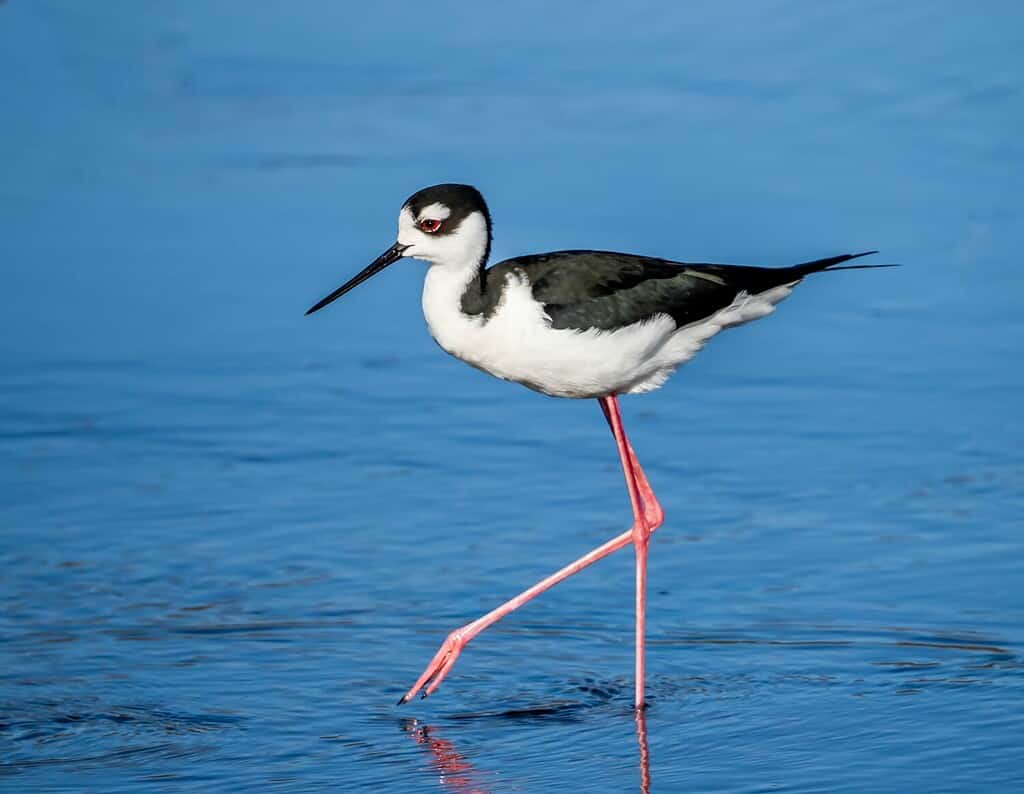
Black-necked stilts have long, pink legs and long, black beaks.
©Jim Schwabel/Shutterstock.com
| Bird | Habitat | Diet | Behavior |
|---|---|---|---|
| California gull | Lakes and ponds | Aquatic invertebrates | Ground forager |
| California quail | Scrub | Seeds | Ground forager |
| Semipalmated plover | Shorelines | Aquatic invertebrates | Ground forager |
| Killdeer | Grasslands | Insects | Ground forager |
| Wilson’s pharalope | Lakes and ponds | Aquatic invertebrates | Dabbler |
| Black-necked stilt | Marshes | Aquatic invertebrates | Probing |
Thank you for reading! Have some feedback for us? Contact the AZ Animals editorial team.

